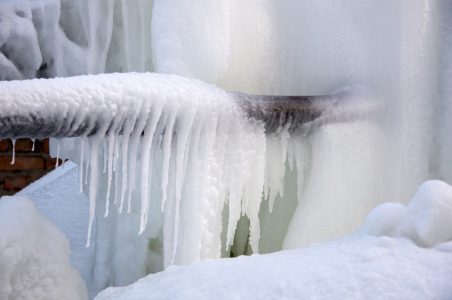Were you trying to locate insight around Winter Plumbing Precautions: Preventing Frozen Pipes?

Cold weather can ruin your plumbing, specifically by freezing pipes. Here's exactly how to avoid it from happening and what to do if it does.
Intro
As temperature levels decline, the risk of frozen pipes increases, possibly bring about pricey repair services and water damage. Understanding just how to avoid frozen pipelines is important for property owners in cool climates.
Understanding Icy Pipelines
What triggers pipelines to freeze?
Pipelines freeze when revealed to temperatures listed below 32 ° F (0 ° C) for expanded periods. As water inside the pipelines ices up, it broadens, taxing the pipeline walls and possibly creating them to burst.
Dangers and problems
Icy pipelines can result in water system disturbances, home damages, and pricey repairs. Burst pipes can flood homes and trigger substantial architectural damages.
Indicators of Frozen Piping
Recognizing icy pipelines early can stop them from breaking.
Just how to recognize icy pipes
Search for reduced water flow from faucets, uncommon smells or sounds from pipelines, and visible frost on revealed pipes.
Avoidance Tips
Insulating at risk pipes
Cover pipelines in insulation sleeves or use warm tape to secure them from freezing temperature levels. Concentrate on pipes in unheated or exterior locations of the home.
Heating strategies
Keep indoor areas adequately heated up, especially areas with pipes. Open cupboard doors to permit warm air to distribute around pipelines under sinks.
Shielding Outdoor Plumbing
Yard tubes and outdoor faucets
Detach and drain pipes yard hoses before winter season. Set up frost-proof faucets or cover outside taps with insulated caps.
What to Do If Your Pipelines Freeze
Immediate actions to take
If you believe frozen pipelines, maintain faucets open up to eliminate pressure as the ice thaws. Use a hairdryer or towels taken in warm water to thaw pipelines gradually.
Long-Term Solutions
Architectural changes
Take into consideration rerouting pipelines far from outside wall surfaces or unheated locations. Include added insulation to attic rooms, cellars, and crawl spaces.
Upgrading insulation
Purchase premium insulation for pipes, attics, and walls. Correct insulation aids preserve constant temperatures and reduces the threat of icy pipes.
Conclusion
Preventing icy pipelines calls for proactive procedures and fast responses. By comprehending the causes, indications, and preventive measures, property owners can secure their pipes during cold weather.
5 Ways to Prevent Frozen Pipes
Drain Outdoor Faucets and Disconnect Hoses
First, close the shut-off valve that controls the flow of water in the pipe to your outdoor faucet. Then, head outside to disconnect and drain your hose and open the outdoor faucet to allow the water to completely drain out of the line. Turn off the faucet when done. Finally, head back to the shut-off valve and drain the remaining water inside the pipe into a bucket or container. Additionally, if you have a home irrigation system, you should consider hiring an expert to clear the system of water each year.
Insulate Pipes
One of the best and most cost-effective methods for preventing frozen water pipes is to wrap your pipes with insulation. This is especially important for areas in your home that aren’t exposed to heat, such as an attic. We suggest using foam sleeves, which can typically be found at your local hardware store.
Keep Heat Running at 65
Your pipes are located inside your walls, and the temperature there is much colder than the rest of the house. To prevent your pipes from freezing, The Insurance Information Institute suggests that you keep your home heated to at least 65 degrees, even when traveling. You may want to invest in smart devices that can keep an eye on the temperature in your home while you’re away.
Leave Water Dripping
Moving water — even a small trickle — can prevent ice from forming inside your pipes. When freezing temps are imminent, start a drip of water from all faucets that serve exposed pipes. Leaving a few faucets running will also help relieve pressure inside the pipes and help prevent a rupture if the water inside freezes.
Open Cupboard Doors
Warm your kitchen and bathroom pipes by opening cupboards and vanities. You should also leave your interior doors ajar to help warm air circulate evenly throughout your home.

I'm very interested in Preventing and dealing with frozen pipes and I am hoping you enjoyed the entire blog post. So long as you liked our blog posting if you please make sure you remember to pass it around. We love your readership.
Schedule Service Now
Comments on “Important Tips to Protect Against Frozen Pipes in Winter”